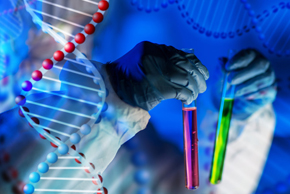Though ELISA (enzyme-linked immunosorbent assay) and Western Blot tests are available to screen HIV, there's still no cure for this disease. Lab equipment suppliers are also offering quality ELISA kits, which makes it easier to use ELISA for detecting molecules or performing tests successfully. A U.S. team of researchers recently made a major step toward finding a permanent cure for the HIV virus. For the first time, by removing the HIV DNA from human cells implanted into mice, the U.S. researchers have raised hopes of a cure.
Scientists at the Lewis Katz School of Medicine at Temple University and the University of Pittsburgh completely removed HIV DNA from human cells implanted into mice. The team used ‘cut and paste' gene-editing, known as CRISPR-Cas9 to eliminate the virus and prevent further infection.
For the study purpose, three groups of mice were infected with HIV and then the team managed to eliminate the virus and prevent further infection. The third mice group was infected with a ‘humanized model' engrafted with human T-cells, which is where HIV tends to hide and avoid detection. Amazingly, after a single treatment with CRISPR/Cas9, viral fragments were successfully excised from latently infected human cells embedded in mouse tissues and organs. The technique uses tags to identify the location of the mutation, and an enzyme that acts as tiny scissors to cut DNA in a precise place, allowing small portions of a gene to be removed.
According to the lead author of the study, "Our new study is more comprehensive. We confirmed the data from our previous work and have improved the efficiency of our gene editing strategy. We also show that the strategy is effective in two additional mouse models, one representing acute infection in mouse cells and the other representing chronic or latent, and infection in human cells."
While the next stage of the testing would be to repeat the study in primates where the DNA is much closer to that of humans, the team's eventual goal is a clinical trial in human patients.



